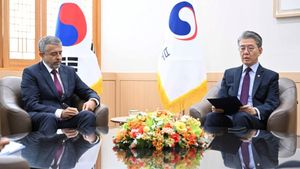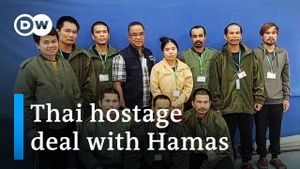The conflict surrounding the M23 rebellion, allegedly supported by Rwanda, continues to destabilize the Democratic Republic of the Congo (DRC), with significant repercussions for regional stability and mineral exploitation. The M23 rebel group, named after the 23 March 2009 peace agreement, has resumed its advances, gaining control over key locations such as Goma and Rubaya. Their re-emergence has once again highlighted the enduring tensions among various ethnic groups within the DRC, as well as the significant external influences at play.
The M23 group, predominantly made up of Congolese Tutsis, alleged violations of the peace agreement as the catalyst for their actions. Marcisa Lourenço, independent risk analyst, explained to Daily Maverick the inevitable nature of conflict inherent to this resource-rich region. “The area around Goma has been in a state of conflict for decades, and this is unlikely to change, especially considering what is at stake: access to minerals,” she said. The region's mines, particularly those yielding coltan, have drawn fierce competition from both state and non-state actors.
The DRC government has not remained silent. Following the death of North Kivu governor Major General Peter Cirimwami on January 23, President Félix Tshisekedi made an emergency return from Davos to address these developments. Military spokesperson General Sylvain Epenge issued chilling warnings, indicating, “What Rwanda does not know is the war has not yet begun… and it will begin.” With tensions boiling and territorial gains being made by M23, Tshisekedi is working to bolster international support, especially with the upcoming session of the UN Security Council.
To counteract the M23 threat, South Africa has deployed troops through the Southern African Development Community (SADC) as part of its military mission, known as SAMIDRC. This intervention is not without its challenges, as reports of logistical and resource deficiencies have surfaced. A military officer commented, “We’re fighting a 21st-century war with 20th-century tools,” highlighting the difficulty SANDF faces, particularly during clashes witnessed near Sake.
The struggle for control over mines like those in Rubaya is not merely strategic; it's economically lucrative. According to estimates, the M23 has earned around £650,000 a month since capturing the coltan mines, which are used to produce tantalum for advanced technological devices. With each month, over 150 tonnes of coltan are reportedly smuggled across the Rwandan border.
Historical tensions between Rwanda and the DRC interweave this conflict's complexity. Rwanda’s military involvement is believed to stem from the DRC harboring individuals linked to the Hutu extremists responsible for the 1994 genocide. These historical grievances fuel cross-border warfare as the M23 capitalizes on militia expertise and alleged material support from Rwandan forces. Videos indicating the presence of Rwandan Defence Forces within M23 units continue to emerge, raising scrutiny over Kigali's military strategies.
Despite the violent crackdown on the M23 uprising launched by the UN-backed intervention brigade back in 2013, these rebel forces have utilized time to regroup and arm themselves. Reports indicate significant upgrades to their weaponry and tactics, enabling them to outmaneuver opposition forces effectively. With significant international interest turning toward this confrontation, sanctions against Rwanda could bolster the DRC’s political standing yet seem unlikely to disrupt Kagame's hold on power.
This perfect storm of territorial ambition, historical animosities, and rampant resource extraction characterizes the dynamic within the DRC. Mining operations, set against the backdrop of warfare, resemble the chaotic scenes of the 19th-century gold rush. Miners toil under precarious conditions, risking their lives alongside armed forces embroiled in conflict over land and gain. The turmoil continues to perpetuate cycles of violence, as control over mineral riches remains enticingly profitable.
Analysts believe the interplay between conflict and mineral wealth will hinder peace efforts. Lourenço concludes her assessment with stark realism, stating, “Minerals are a lucrative business, and so is war. The eastern DRC has both, which complicates any sustainable peace process.” Such sentiments resonate as various nations and armed groups scramble for resources, each entrenching their positions within this rich yet turbulent territory.
While the DRC’s government works to secure enhanced international support against the specter of the M23, the broader ramifications for regional geopolitics remain under intensive scrutiny. Diplomatic channels must navigate through both accusations of subterfuge and the pursuit of potential sanctions, as the urgency of humanitarian needs escalates amid violent discord.



